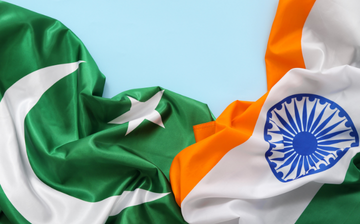
The 2025 India–Pakistan Conflict
The 2025 India–Pakistan Conflict
The 2025 India–Pakistan conflict marked a sharp escalation in long-standing tensions between the two nations. It began with a terrorist attack in Pahalgam and rapidly expanded into military, diplomatic, and humanitarian dimensions. The situation emphasized not only the fragility of peace in the region but also the evolving complexity of modern conflict.
Escalation Timeline
April 22, 2025: A brutal terrorist attack occurred in the Baisaran Valley near Pahalgam, Jammu and Kashmir. Five militants targeted tourists, killing 26 civilians, including 25 Hindu tourists and one local Muslim guide. The Resistance Front (TRF) claimed responsibility, citing opposition to non-local settlement in Kashmir after the revocation of its special status. Indian intelligence agencies reported that attackers used encrypted satellite phones to coordinate and were in contact with handlers across the Line of Control (LoC).
April 23 – May 6, 2025: India held Pakistan responsible for sheltering the attackers and demanded immediate action. Pakistan denied the accusations. Consequently, both countries withdrew envoys and halted all bilateral dialogues. Skirmishes along the LoC became more frequent, leading to additional casualties.
May 7, 2025: India launched Operation Sindoor, a joint military operation targeting terrorist camps in Pakistan and Pakistan-occupied Kashmir (PoK). Between 1:05 A.M. and 1:30 A.M. IST, the Indian Air Force conducted airstrikes on nine locations. This was the first time India crossed the international border for such an operation since 1971. The operation aimed to dismantle terrorist infrastructure and eliminate those responsible for the Pahalgam attack.
May 8 – 9, 2025: In retaliation, Pakistan carried out UAV and drone attacks on Indian military installations in Gujarat and Rajasthan. India deployed Akash Shield and D4 air defence systems in response, destroying approximately 70 Pakistani drones, including Turkish-origin Songar armed drones.
May 10, 2025: International pressure from the United States, Russia, and the United Nations led both countries to agree to a ceasefire. The agreement included troop disengagement and the resumption of diplomatic dialogue. Although the ceasefire held, both nations remained on high alert.
Risk Management Analysis
This conflict highlighted the multi-dimensional nature of modern warfare and the importance of strategic, economic, diplomatic, and humanitarian risk management.
Strategic and Cyber Risks
Strategic Risk: Deterrence strategies and cyber warfare were major concerns. Fortunately, both nations exercised nuclear restraint by adhering to credible minimum deterrence doctrines. This restraint played a key role in preventing full-scale war.
Cyber Warfare: Both countries engaged in cyberattacks targeting power grids, military communications, and sensitive databases. These incidents revealed significant gaps in cybersecurity, emphasizing the need for comprehensive international frameworks to manage cyber threats.
Economic and Trade Risks
Trade Disruptions: Cross-border trade halted, supply chains broke down, and investor confidence declined. Border economies experienced significant slowdowns.
Agricultural Impact: Fighting and civilian displacement disrupted farming activities. Crops were destroyed, and food security became a pressing concern. Trade route closures further exacerbated the issue.
Diplomatic and Legal Risks
Diplomatic Risk: The conflict strained international relations. Some nations supported Pakistan, while others backed India’s stance. For example, India’s relations with Turkey and Azerbaijan deteriorated, causing public outrage domestically. Conversely, ties with the United States and France improved, as these nations supported India’s right to self-defense.
Legal Issues: India’s cross-border strikes raised legal questions. India defended its actions as legitimate self-defense, whereas Pakistan accused India of violating its sovereignty.
Humanitarian Risks
Civilian Casualties: Reports indicated 31 Pakistani civilians died during Indian strikes, while Indian casualties resulted from Pakistani shelling.
Displacement: Thousands of civilians were forced from their homes, ending up in makeshift shelters with limited facilities. This underscored the urgent need for stronger humanitarian aid systems.
Lessons Learned
Several critical lessons emerged from the conflict, offering insights for managing future crises more effectively.
Communication Channels: Open and continuous communication proved essential. The eventual ceasefire resulted largely from backchannel diplomacy and third-party mediation.
Third-Party Mediation: Global actors like the U.S. and UN played vital roles in de-escalation, demonstrating the value of international cooperation in conflict resolution.
Economic Interdependence: The conflict’s economic fallout reinforced the importance of strong trade relationships. Robust economic ties can serve as deterrents to future hostilities.
Crisis Management Frameworks: The war exposed weaknesses in cybersecurity and civilian protection. Stronger risk management strategies are necessary to address such vulnerabilities. Institutions like the Global Risk Management Institute (GRMI) provide specialized training, equipping professionals and policymakers with tools to manage and mitigate complex risks effectively.
Conclusion
The 2025 conflict served as a stark reminder of the region’s enduring instability. India demonstrated significant military strength. However, the conflict also revealed the urgent need for stronger diplomacy, deeper economic partnerships, and robust strategic planning. Long-lasting peace depends on building trust and addressing root causes of conflict.
To handle such complex challenges, professionals and policymakers must be prepared. Institutions like GRMI play a crucial role in this preparation. By offering education in strategic risk management, GRMI helps build a safer, more resilient future for the region and the world.
You may also like

Courses After BCom With Highest ROI

FRM Full Form and Its Importance in Finance


